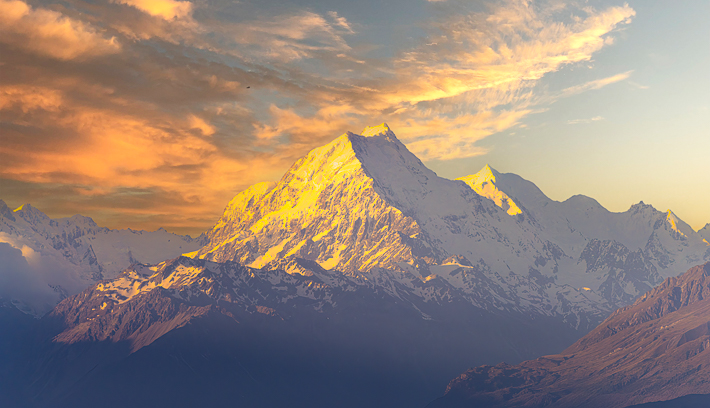
Sunrise on Aoraki/Mount Cook, which is home of the highest mountains and longest glaciers in the Southern Hemisphere. It is an impressive landmark in the Southern Alps at 12,218 feet. The mountain was formed by the collision of tetonic plates that uplifted to form the Alps. Aoraki is the Mäori name for Mount Cook, meaning cloud piercer.
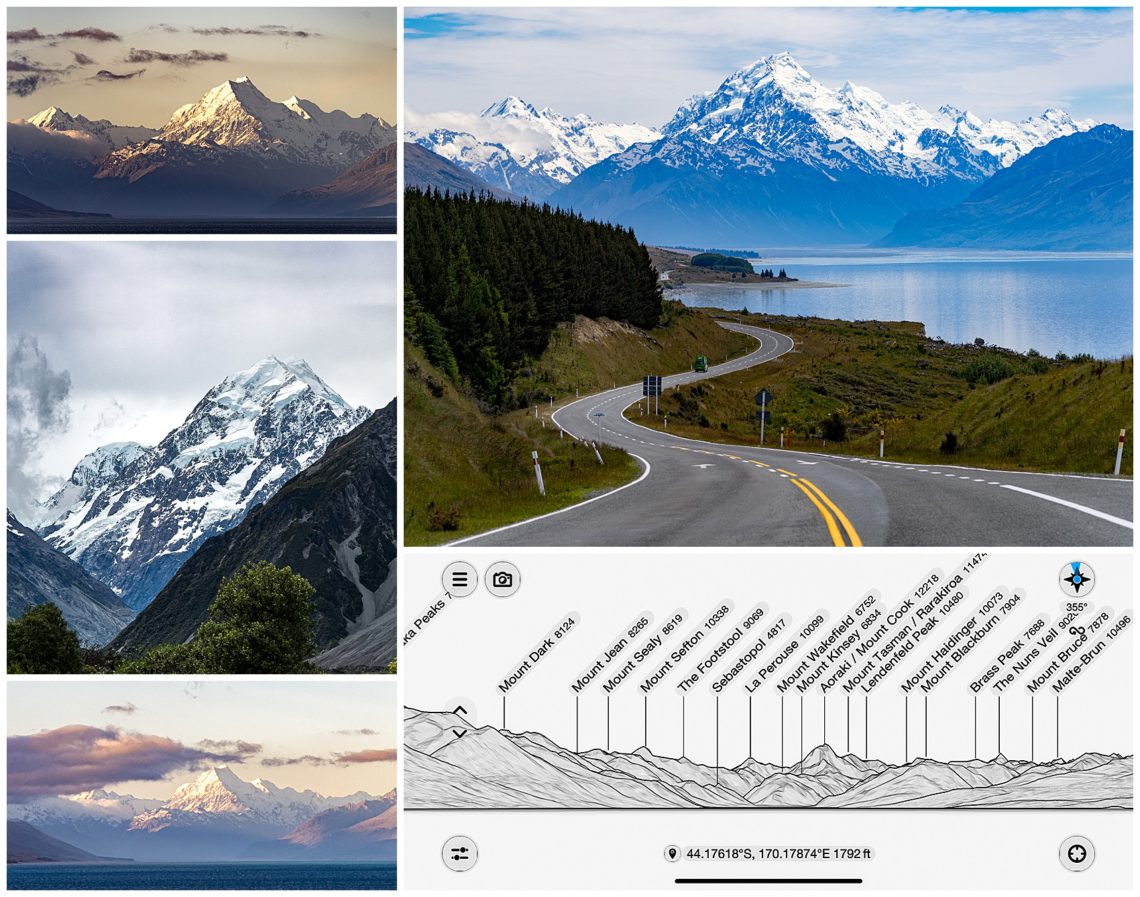
Everyone who visits this area is seeking photos of Mount Cook. We loved finding this image of a road producing leading lines to Mount Cook. “Leading lines” is a compositional technique used to lead the viewer’s eyes to the heart of the image (top right).
We use an app on our iPhone called PeakFinder, which allows us to aim at any mountain, or series of mountains, and get both the names of each peak, along with its altitude. The lower-right image is a screen grab from the app while looking at a portion of the mountain range that Mt Cook sits on.
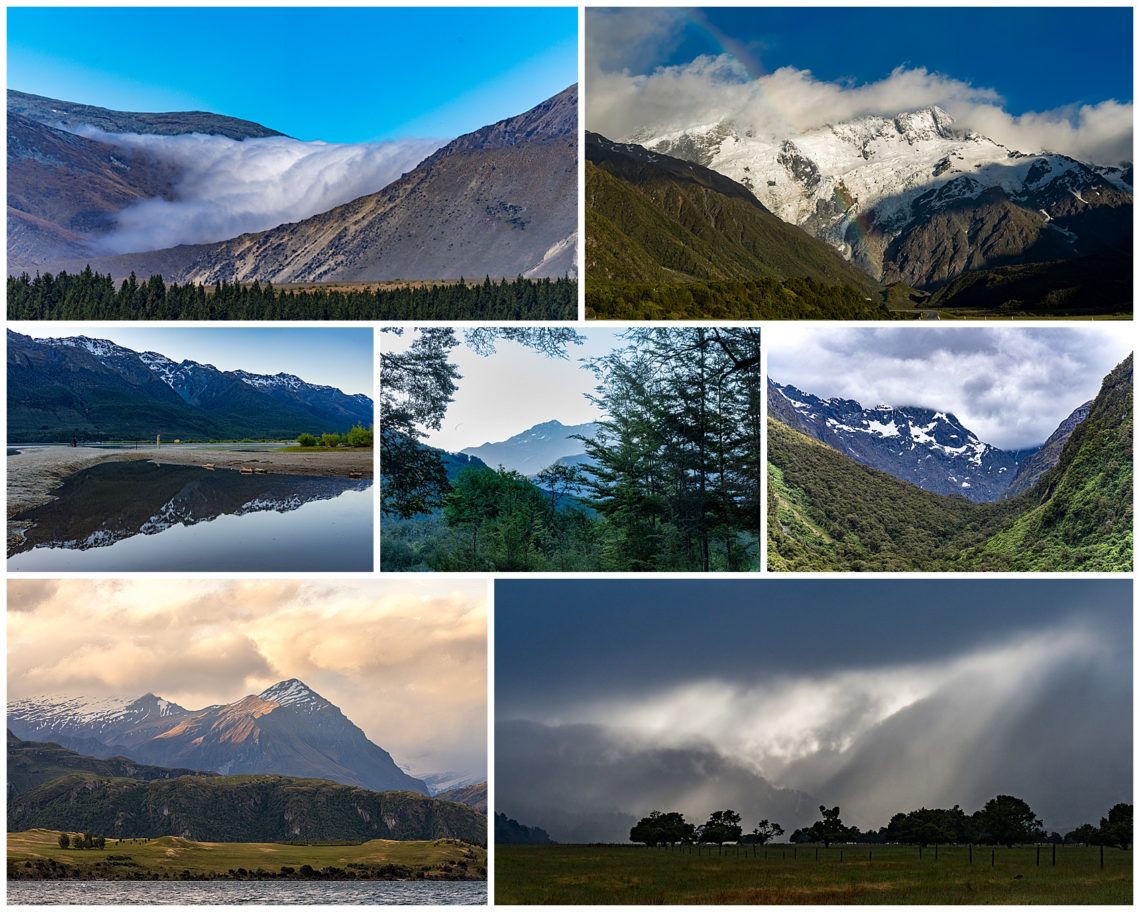
There was plenty of beautiful mountain scenery along the route. Though the stormy weather was not what we had hoped for at the start of the New Zealand summer, it did provide many dramatic storm cloud scenes for us to capture.
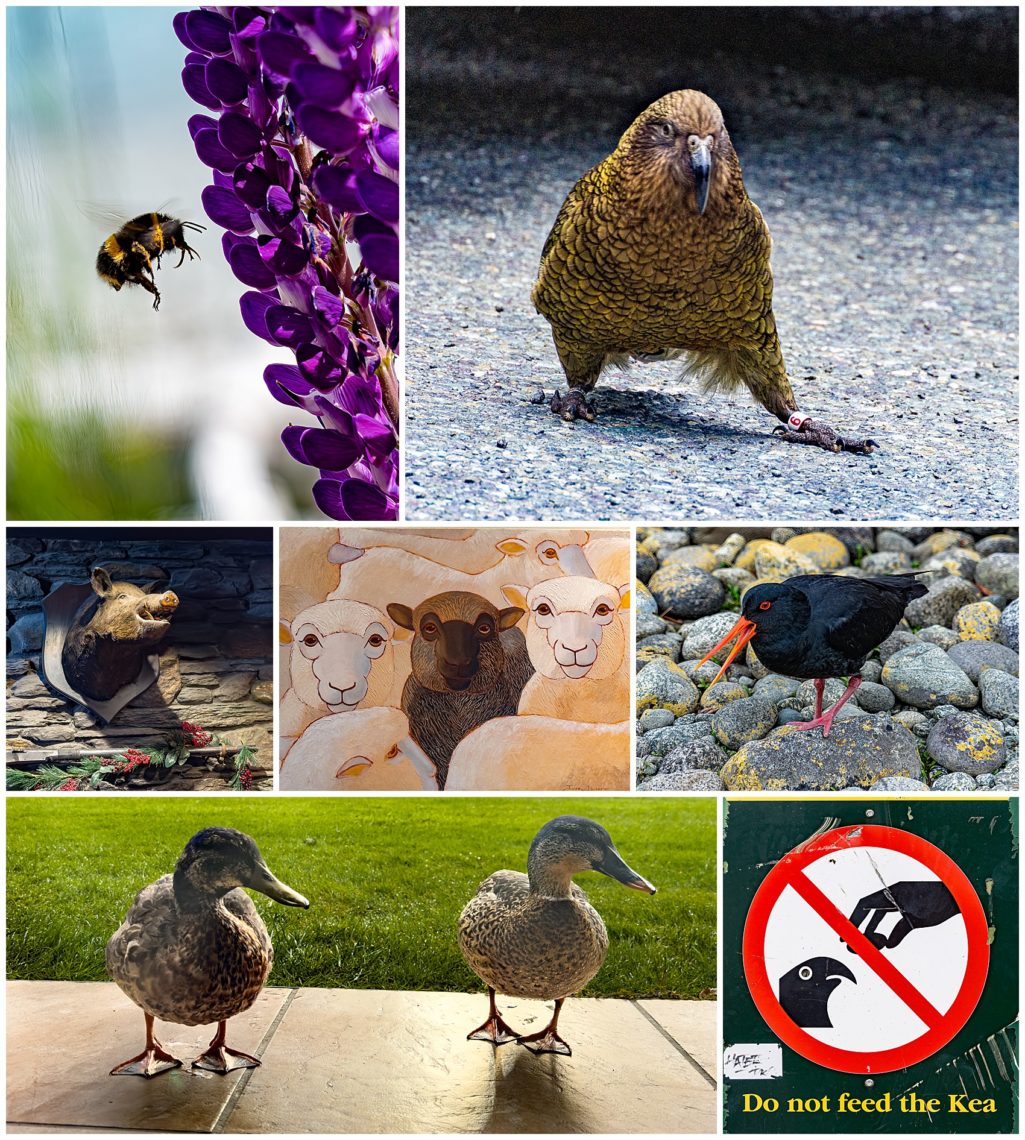
There are very few birds endemic to New Zealand. One such is the Kea though (upper-right). These rather comical birds were often seen around the parking lots when we pulled off the main road. They would walk around the people (we never saw one fly), and one even hopped onto our bus before being encouraged to leave. There are frequent “Do not feed the Kea” signs posted (lower-right), as the government tries to discourage the endangered birds from becoming too dependent on human handouts.
Bees are becoming harder to find as their worldwide populace is decimated. We discovered that lupins are a favorite source of food for the bees though, and we were able to capture this image of one hovering (upper-left). The lake area shown yesterday included numerous oyster catchers walking along the shore (middle-right), and various ducks were often seen walking up to check us out (lower-left). One of the oddball cafes shown yesterday had a boar mounted on the wall (middle-left), while another cafe had an interesting painting of sheep (middle), which New Zealand is famous for.
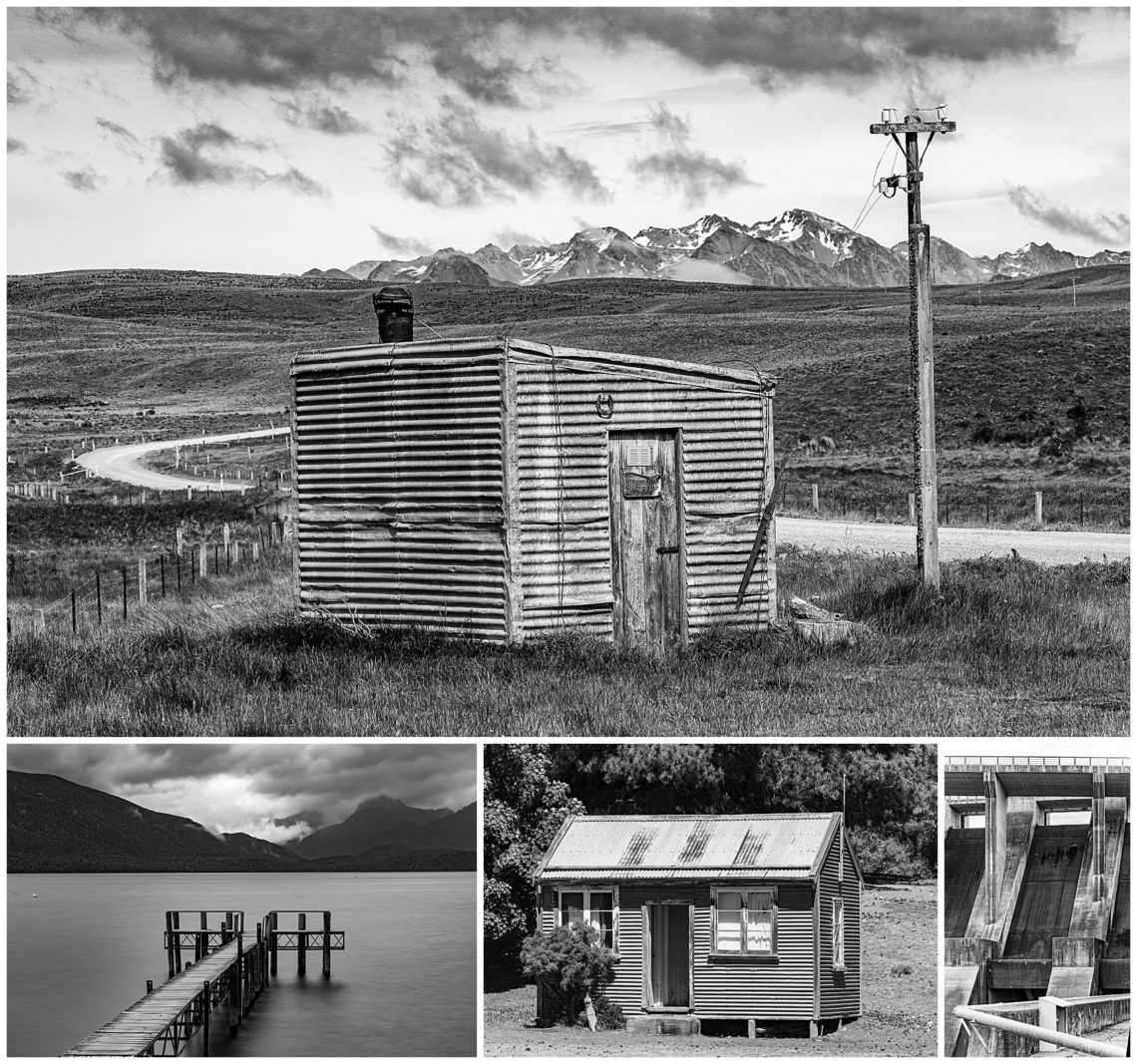
As already noted, the weather was mostly stormy and rather unpleasant during this entire tour. Glen Howey, our local photographic guide, frequently would point out a dull scene and exclaim how well it would work in Black & White! Though we were skeptical, we followed his advice and captured the scene as best we could, and then converted several to Black & White in post-processing. As you can see here, he was right in many cases, and we were able to turn drab lifeless images and give them life by removing the dull colors.
Glen was the eternal optimist, and kept us all looking to bring the best out of the expectedly poor weather.
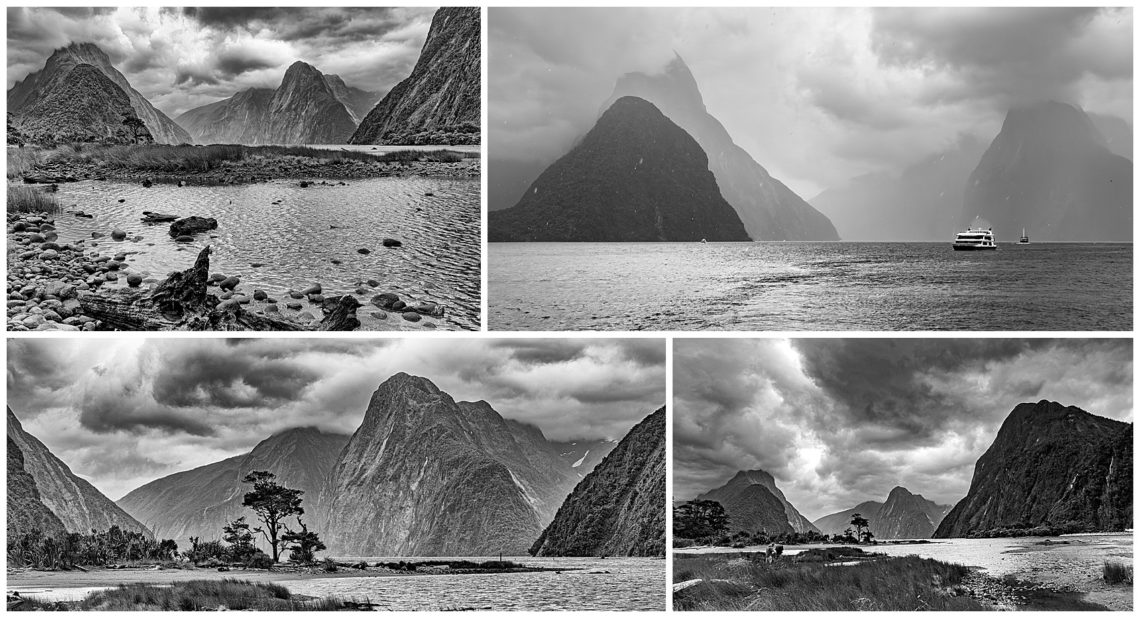
Here are more moody black and white landscape photos, including scenes at Milford Sound, Arthur’s pass, and Glenorchy.
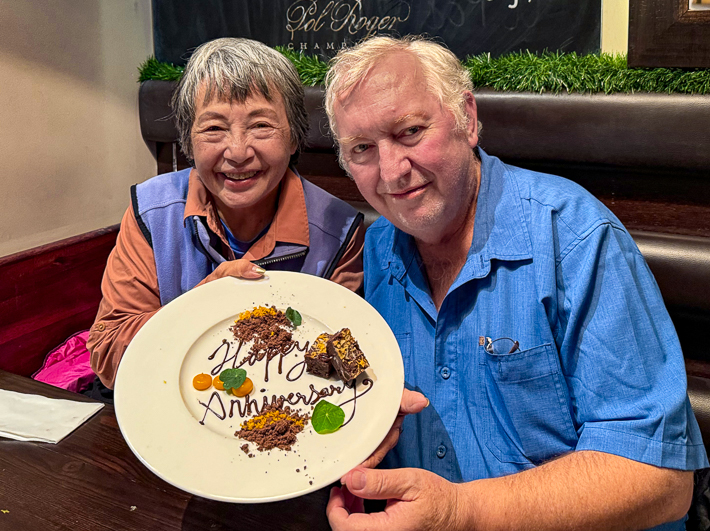
The end of our tour on December 16th was also the day of our 51st Anniversary.